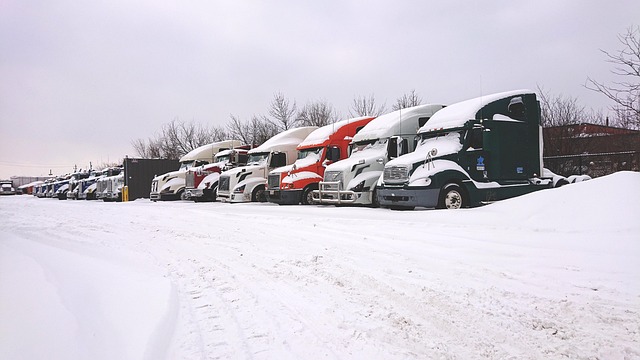Registering a car in California is a straightforward process, but understanding the requirements and gathering the right documents is essential. This guide will walk you through every step, from ensuring your vehicle’s eligibility for registration with the DMV to using a VIN verifier for online convenience. By following these instructions, you’ll be on your way to becoming a legal California motorist in no time.
- Understand Eligibility Requirements for Car Registration in California
- Gather Necessary Documents for Car Registration
- Visit a DMV Office or Use the Online System with DMV VIN Verifier
- Complete the Registration Process and Pay Fees
- Maintain Your Vehicle's Registration and Meet All Legal Obligations
Understand Eligibility Requirements for Car Registration in California

Before you begin the registration process, it’s crucial to understand the eligibility requirements set by the California Department of Motor Vehicles (DMV). To register a car in California, your vehicle must meet certain criteria. For instance, it should be legally imported and comply with state safety and emissions standards. Additionally, the vehicle’s identification number (VIN) must pass a verification process using a DMV-approved VIN verifier like a mobile vin verifier or a traditional vin inspection.
A mobile vin verifier can facilitate this step by quickly scanning and cross-referencing your car’s VIN against the manufacturer’s records during an on-site or remote inspection. Alternatively, you can visit a certified inspection station for a manual vin verification. Ensuring that your vehicle satisfies these requirements is a critical first step in navigating the California registration process smoothly.
Gather Necessary Documents for Car Registration

Before you begin the registration process for your car in California, it’s crucial to gather all the necessary documents. The California Department of Motor Vehicles (DMV) requires specific paperwork for a smooth and efficient registration. One essential step is to obtain a Vehicle Identification Number (VIN) verification from a trusted source. You can opt for a traditional vin inspection at a certified location or leverage mobile vin verification services, which offer convenience by allowing you to complete this step from the comfort of your home or office.
Among the documents you’ll need are the title or bill of sale for the vehicle, proof of insurance, and a valid driver’s license. It’s also beneficial to have maintenance records and any relevant repair documents, as these can streamline the registration process and demonstrate the car’s overall condition. Additionally, having your VIN checked by a mobile service or through the DMV’s online tools ensures that your vehicle meets all safety standards before final registration.
Visit a DMV Office or Use the Online System with DMV VIN Verifier

You have two main options when it comes to registering your car in California. One way is to visit a local DMV office and handle everything in person. This traditional method involves filling out paperwork, presenting required documents like proof of insurance and vehicle ownership, and paying the registration fees.
Alternatively, you can streamline the process by utilizing the online system, which offers options like the DMV VIN Verifier. This digital tool allows you to check your vehicle’s history using its unique Vehicle Identification Number (VIN). Additionally, some services provide mobile vin inspection or a mobile vin verifier, enabling you to complete parts of the registration from the comfort of your home before visiting a DMV location.
Complete the Registration Process and Pay Fees

Once you have gathered all the necessary documents and passed the vehicle inspection, it’s time to complete the registration process with the DMV (Department of Motor Vehicles). Visit a local DMV office or use their online services to initiate the registration. You’ll need to provide your vehicle’s information, including its make, model, year, and, most importantly, the unique Vehicle Identification Number (VIN). The VIN is crucial for accurate record-keeping and can be easily verified using a DMV VIN verifier, ensuring a seamless process.
During the registration, you’ll also need to pay the associated fees. These fees vary based on your vehicle’s type and age. For instance, there may be additional charges for older vehicles or those with specific features. You can opt for various payment methods, typically including cash, credit card, or debit card, depending on the DMV’s policies. After successfully completing these steps, you’ll receive your official registration documents, allowing you to legally operate your vehicle in California.
Maintain Your Vehicle's Registration and Meet All Legal Obligations

Maintaining your vehicle’s registration is a crucial aspect of car ownership in California. Once registered, it’s your legal obligation to keep your information up-to-date and ensure your car meets safety standards. Regularly renewing your registration on time is essential to avoid penalties. The California Department of Motor Vehicles (DMV) provides convenient online and in-person renewal options.
Additionally, keeping your Vehicle Identification Number (VIN) accurate and verifiable is vital. Utilize a trusted mobile VIN verification service or conduct a vin inspection to ensure the VIN data is correct and matches the vehicle’s characteristics. This process helps prevent fraud and ensures you meet all legal obligations when registering or transferring ownership of your car.
Registering a car in California is a straightforward process once you meet the eligibility requirements. By gathering all necessary documents, whether through a DMV office visit or using the online system with a DMV VIN verifier, you can efficiently complete the registration process and keep your vehicle legally compliant. Remember to maintain your registration and fulfill all legal obligations to avoid penalties and ensure a smooth driving experience in the Golden State.
